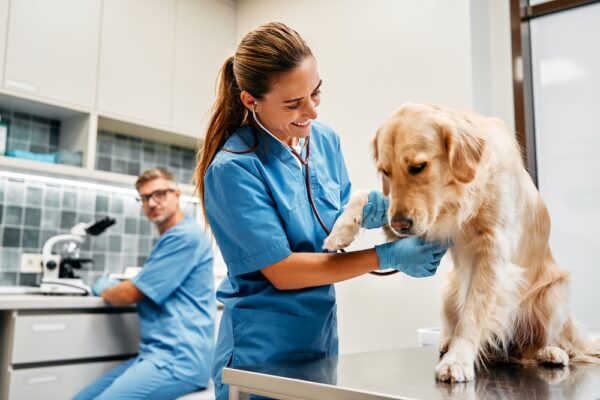When pet owners need a veterinarian, their search often begins on Google. If your clinic isn’t appearing in local search results, you’re losing potential clients to competitors who have optimized their websites for search engines. This is where Veterinary SEO (Search Engine Optimization) comes in.
SEO is the process of improving your website’s visibility on Google so pet owners can easily find you when searching for terms like “best vet near me”, “emergency vet in [city]”, or “affordable pet vaccinations”. By optimizing your online presence, you increase website traffic, attract more local clients, and ultimately book more appointments.
In this guide, we’ll walk through how to rank higher on Google using veterinary SEO best practices—without needing a massive marketing budget.
Why SEO Matters for Veterinary Clinics
SEO isn’t just for big businesses—it’s essential for small, independent veterinary clinics trying to compete with corporate-owned hospitals. Here’s why SEO should be a top priority:
- Over 70% of pet owners search online before choosing a vet. If your clinic doesn’t show up in search results, you’re missing out.
- Local search is key. The majority of vet visits come from pet owners in your area. Optimizing for local search helps you rank when people search for veterinarians nearby.
- SEO provides long-term results. Unlike paid ads that stop working once your budget runs out, a strong SEO strategy keeps driving traffic to your website for months or years.
By investing in SEO, you increase your online visibility, attract more pet owners, and grow your veterinary practice—all without spending a fortune on ads.
Step 1: Optimize Your Google Business Profile for Local SEO
Your Google Business Profile (GBP) is one of the most important ranking factors for local veterinary SEO. This free tool allows your clinic to appear in Google Maps and local search results, helping nearby pet owners find your services.
How to Optimize Your Google Business Profile:
- Claim and verify your listing – Go to Google Business Profile and set up or claim your listing.
- Use your exact business name, address, and phone number (NAP consistency is critical for SEO).
- Select the right business category – Choose “Veterinarian” as your primary category and add related services like “Animal Hospital” or “Pet Vaccination Clinic.”
- Add high-quality photos of your clinic, staff, and happy pet patients.
- Encourage client reviews – The more positive reviews you have, the higher your ranking in local search results.
- Regularly post updates and promotions to keep your profile active and engaging.
By fully optimizing your Google Business Profile, you increase your chances of appearing in Google’s Local Pack, the top three listings that show up in Google Maps searches.
Step 2: Use Local Keywords on Your Website
To rank higher on Google, your website needs to include the keywords pet owners are searching for. These are known as local SEO keywords and typically include a combination of veterinary services + location.
Examples of High-Value Veterinary Keywords:
- “Best vet in [city]”
- “Pet vaccinations in [city]”
- “Emergency vet near me”
- “Affordable spay and neuter in [city]”
- “Animal hospital in [city]”
Where to Use Keywords on Your Website:
- Page Titles & Headings: Example: “Comprehensive Veterinary Care in [Your City]”
- Meta Descriptions: The short snippet that appears in search results.
- Service Pages: Each service (spay/neuter, dental care, vaccinations) should have its own dedicated page with relevant keywords.
- Homepage Content: Naturally mention your location and services throughout your main page.
- Image Alt Text: Add descriptions to images with keywords like “Veterinary clinic in [city] providing dental cleanings.”
By strategically placing local keywords throughout your site, Google understands what services you offer and where you’re located, helping you rank for relevant searches.
Step 3: Improve Website Speed & Mobile-Friendliness
Google prioritizes websites that load quickly and provide a good user experience on mobile devices. If your site is slow or difficult to navigate, potential clients will leave—and Google will push your site lower in search rankings.
How to Improve Website Speed & Mobile Experience:
✅ Use a mobile-friendly website design (responsive layout that adapts to different screen sizes).
✅ Compress large images to reduce load times.
✅ Use fast, reliable hosting to improve speed.
✅ Minimize unnecessary plugins or scripts that slow down your site.
A faster, mobile-friendly site reduces bounce rates and improves your SEO rankings, making it easier for pet owners to find and use your website.
Step 4: Create High-Quality, SEO-Friendly Blog Content
Google rewards websites that provide valuable, informative content. Blogging is a great way to attract traffic, establish your expertise, and rank for additional keywords.
What to Blog About for Veterinary SEO?
- Common pet health concerns (e.g., “5 Signs Your Dog Needs a Vet Visit”)
- Seasonal pet care tips (e.g., “How to Keep Your Pet Safe in Summer”)
- Frequently asked questions (e.g., “How Often Should I Take My Cat to the Vet?”)
- Educational guides (e.g., “The Ultimate Guide to Puppy Vaccinations”)
Each blog post should:
✅ Include local keywords like “dog dental care in [city].”
✅ Have a clear, engaging headline that answers a common pet owner question.
✅ Use internal links to other pages on your site (e.g., linking from a blog post to your appointment page).
✅ Feature a call-to-action (CTA) encouraging readers to schedule an appointment.
Regular blogging increases your visibility on Google, drives more website traffic, and establishes your clinic as a trusted resource for pet owners.
Step 5: Get More Online Reviews & Backlinks
Google considers trust and authority when ranking websites. The more positive reviews and backlinks (links from other websites to yours) you have, the better your rankings.
How to Get More Reviews:
- Ask satisfied clients to leave a Google review after their appointment.
- Send follow-up emails with a review request and direct link.
- Display signs in your clinic with a QR code leading to your review page.
How to Build Backlinks:
- Partner with local pet businesses (groomers, pet stores, shelters) and ask them to link to your site.
- Write guest blog posts for local pet organizations.
- Submit your clinic to online directories like Yelp, AVMA, and local chamber of commerce listings.
The more reviews and backlinks you build, the more credibility your clinic gains in Google’s eyes, boosting your search rankings.
Get More Veterinary Clients With SEO
Veterinary SEO is one of the most effective and affordable ways to attract local pet owners and grow your practice. By optimizing your Google Business Profile, website content, page speed, and online reputation, you can rank higher in search results and drive more appointments—without relying on expensive ads.
If your clinic needs help with SEO, Vet Marketing by Signal specializes in affordable, high-converting veterinary websites and SEO strategies that get results.
Let’s get your clinic to the top of Google—start today! 🚀




